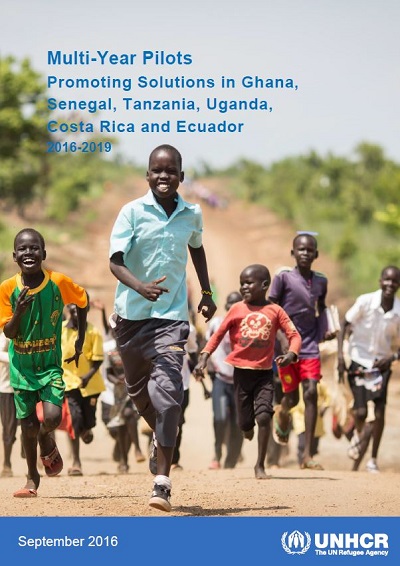In 2015, UNHCR launched multi-year, multi-partner planning pilots in six operations—Costa Rica, Ecuador, Ghana, Senegal, Uganda and the United Republic of Tanzania—to test new approaches to the design, implementation, monitoring and evaluation of UNHCR country programmes. The aim is to provide tools for UNHCR to develop more innovative long-term programmes with partners, which are complementary to ongoing development efforts and enable UNHCR to be a more predictable partner. This pilot draws on lessons learned of the criticality for long-term planning that extends beyond immediate humanitarian needs allowing focus on effective protection, sustainable self-reliance of persons of concern and durable solutions for all populations of concern, including those in protracted situations. In the longer term these interventions should reduce the conventional humanitarian parallel services that are not sustainable and that do not support local and national systems.
The multi-year planning pilots are based on multi-year protection and solution strategies with an overall vision for the next three to five years, as well as strategic objectives and milestones, key stakeholders, leadership and coordination structures, risk assessments, and resource requirements. These strategies work towards achieving the economic, legal, socio-cultural, and civil-political dimensions of solutions—working with local and national authorities to strengthen communities while reducing the risk of disenfranchisement among people of concern as well as host communities. The approach entails a continuous advancement towards greater enjoyment of rights in countries of asylum while durable solutions are pursued.
Two of the operations—Tanzania and Uganda—are currently responding to emergency situations as well as supporting refugees who are in a protracted displacement situation. In these contexts, interventions for both emergency and protracted situations fall under a broader protection and solutions programming umbrella. This ensures a solutions-oriented approach from the outset of displacement and early engagement of development actors in emergency settings.
In 2016, UNHCR senior management endorsed the six strategies. Lessons learned are already feeding into the institutionalization of a more strategic and progressive approach to solutions with UNHCR playing a central role in supporting governments and acting as a catalyst for action by other types of stakeholders. The strategy development process has had significant intrinsic value. It has improved situation analysis, prioritization and decision-making while embedding broad ownership among key operational stakeholders. Consequently, the framework for protection and solution strategies was included in the 2016 planning instructions to all operations. Over the next few years, UNHCR will monitor the implementation of these six pilots so as to determine where and how to expand and refine them.
 PUBLICATIONS
PUBLICATIONS